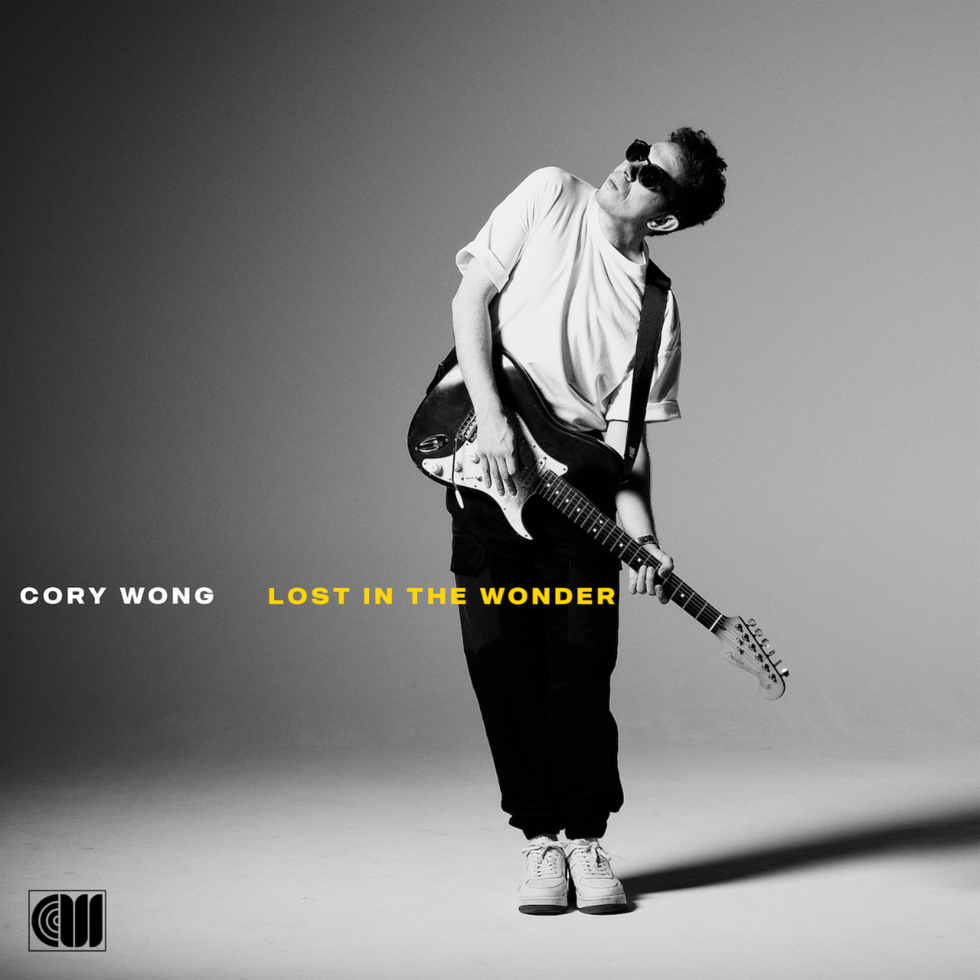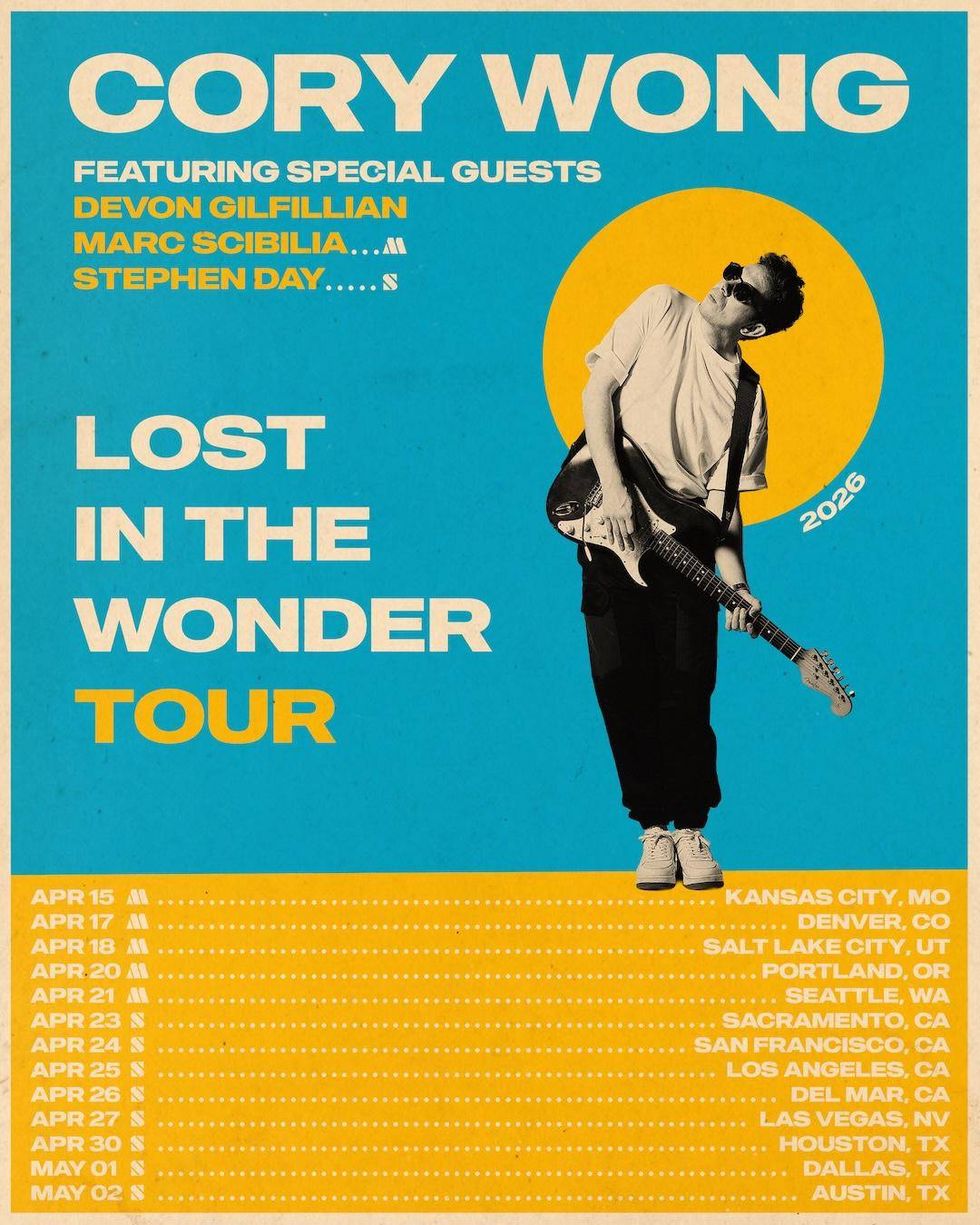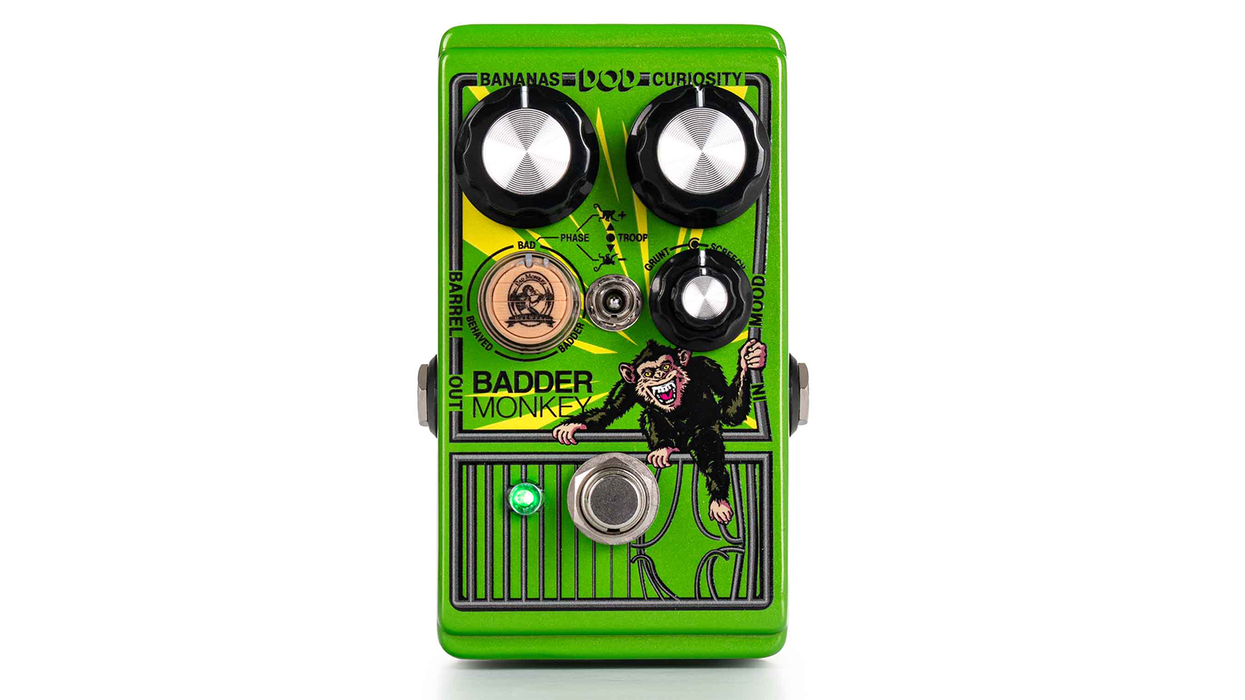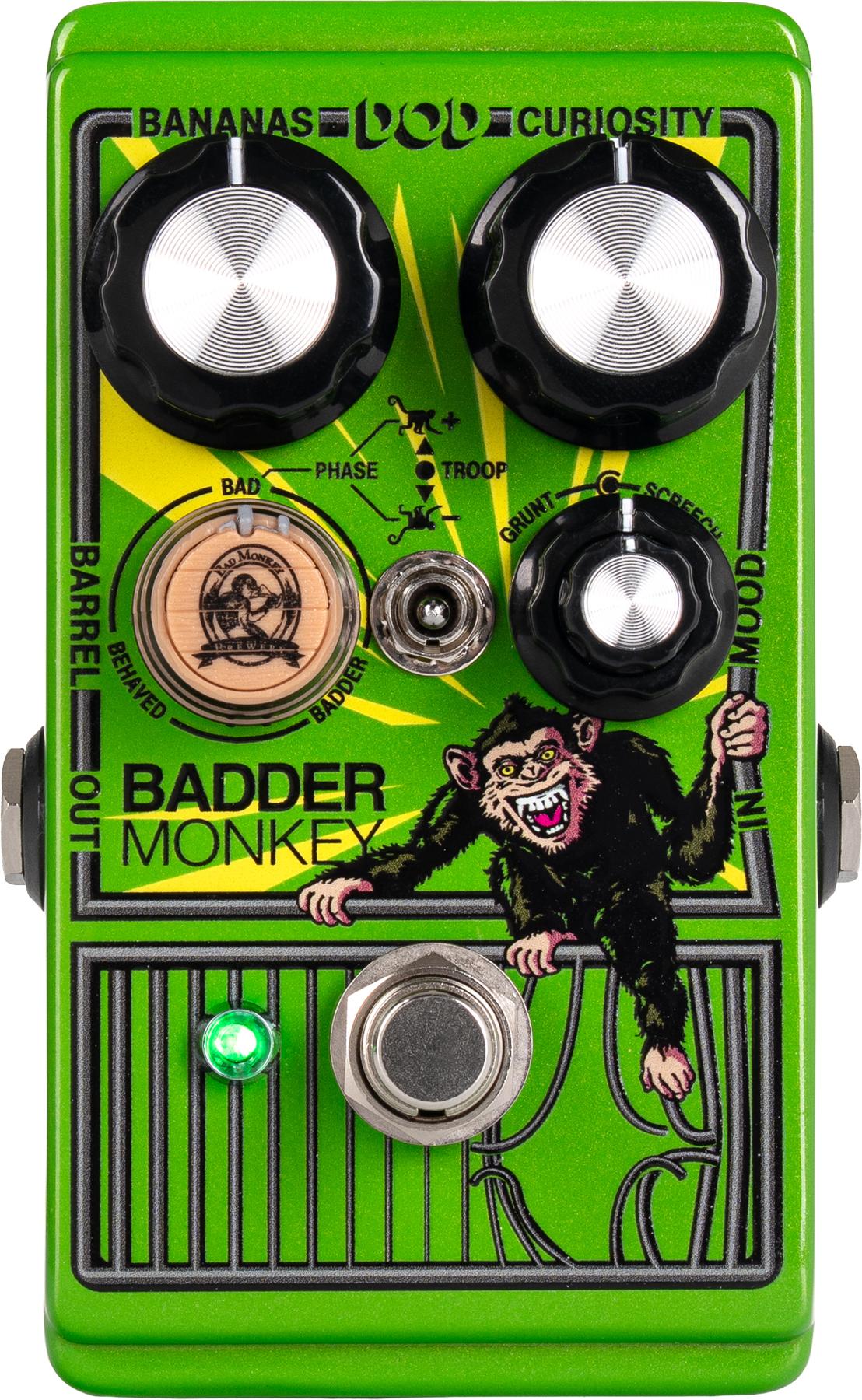Not every guitar player
recognizes Rick Turner’s
name, but one could argue that
every guitar player should know it.
Many consider him the father of
boutique guitar building because
of the Model 1 guitar he built
for Fleetwood Mac’s Lindsey
Buckingham in the mid ’70s.
Although he’s also known for his
time at Alembic Inc., the brief period
he spent at Gibson (before he
“ran afoul of corporate politics”),
and the three boutique guitar companies
he runs today—Renaissance
Guitars, Compass Rose Guitars,
and Rick Turner Guitars—Turner’s
Model 1 is what started it all.
Although some of its features are fairly commonplace on modern electrics, the Model 1’s advanced EQ, custom rotating humbucker (which had fewer windings and a wider frequency response than most pickups of the day), and onboard preamp blazed a trail that led the way to countless advances we take for granted today. Let’s take a look at the journey that led Turner to his place at the head of the boutiqueguitar family tree.
Turner’s Musical Beginnings
Turner moved with his beloved Martin D-28 and Epiphone Howard Roberts from Massachusetts to New York City in 1966. He started playing coffeehouses in Greenwich Village and in Boston with Lowell “Banana” Levinger and Jerry Corbitt (who, with Jesse Colin Young, went on to form the Youngbloods). He had already spent time touring with the folk duo Ian and Sylvia, and had also worked with musicianturned- producer Felix Pappalardi (often referred to as “the fourth member of Cream”). Turner’s musical interests continued to evolve, and by the end of the decade he was in the psychedelic band Autosalvage. They opened for Zappa’s Mothers of Invention, and their album got great reviews in Rolling Stone and Crawdaddy. Not that it mattered.
“We quit before we got those reviews!” Turner laughs. “We were way ahead of Spinal Tap, man. And the best gig we ever did was with a band called the Children of Paradise that had Artie Traum and Happy Traum in it. It was at a mental institution on Halloween!”
At the same time, Turner was also earning a little cash doing guitar repair. “I apprenticed in ’63 for a couple of guys in Boston.
One of them, Stan Stansky, had
been a cabinetmaker and didn’t
know much about guitars, but
he had good woodworking skills.
And the other guy, Don Gadbois,
was a really good jazz guitar player
who knew a lot about guitars but
didn’t have much in the woodworking
department.
“I learned luthiery primitive from these guys,” Turner continues. “When I look back at the way we did things, I’m in shock. I mean, it was just horrendous. Those were the dark ages of American small-shop luthiery and guitar repair. Nobody knew anything outside of the factories— nobody knew Jack Diddley squat. A few classical builders were starting to do things, and I knew a few people just starting to try to build acoustic guitars. We who got into it in the early to mid ’60s were really on our own in terms of ‘How do you do this?’ and ‘How do you do that?’ Some of the repair techniques were utterly brutal. We didn’t know about steaming necks off for doing neck resets, we just slammed them out!”
Despite the fact that Autosalvage broke up, the band still played a role in Turner’s guitar- building future. “This guy who was a fan of our band brought me these pieces—an SG neck, a completely smashed SG body, and the pickup harness—and said, ‘Here, you want this? Seventy-five bucks,’” Turner recalls. “I said, ‘sure.’ So I had the neck and the wrecked body. I did this body shape that made it symmetrical and took the design to this cabinet shop on Broadway and Bleecker. They cut it out for me in mahogany, and I took it home and hacked away and veneered the back of it with walnut. Jerry Garcia wound up buying that guitar and used it on the Grateful Dead’s “Skull and Roses” album. That’s the guitar— and it has disappeared. Nobody knows where it is.”
Asked what inspired him to buy 75 bucks’ worth of broken guitar, Turner answers simply, “I wanted to build my own guitar, you know? By that time I had been doing guitar repair for four years or so, so I had the chops. In fact, in New York, when I was broke and needed to pick up a few bucks, I would go down to Dan Armstrong’s shop and say, ‘Dan, you got anything for me to do?’ And he would always toss me a fret job or have me glue a bridge on a Martin and pick up 10 or 15 bucks.”
Turner ended up moving to Marin County, just north of San Francisco, and more or less joined the Grateful Dead family. He did an inlay job on one of Phil Lesh’s basses and made a few custom pickups for the band. “In 1968 or ’69, where did you buy pickups? You could get DeArmonds and that was about it. You couldn’t buy Gibson pickups or Fender pickups. Dan Armstrong started making pickups under the tutelage of Bill Lawrence, and I thought, ‘Well, this is just a little cord with a little wire and some magnets—duh!’ And so I started literally handwinding my own pickups, counting the windings by hand. I brought them out to the Dead’s warehouse and showed Ron Wickersham, who had figured out how to measure the frequency response in the pickups. This was when nobody knew anything about what was really going on. The stuff that we take for granted now, we had to invent and figure out.”
The Alembic Years and Fleetwood Mac
Thus began Turner’s critical, tumultuous Alembic period. Turner co-founded Alembic with Wickersham, and the company’s initial aim was to push the envelope of live sound through the medium of Grateful Dead shows.

A corner of Turner’s factory with the original Model 1 blueprint on the wall.
Turner worked on practically everything Alembic touched, including designing speaker cabinets to eliminate standing waves in the Dead’s Wall of Sound PA system— which had McIntosh power amps pushing 125,000 watts through 450 drivers. Once Turner, Wickersham, and the other folks at Alembic had tackled the acoustic and electronic considerations of large PA systems, they focused on the instruments— primarily Lesh’s basses and Garcia’s guitars. Soon things started to snowball: A carving job Turner did for an early Alembic bass made for Jack Casady helped put Alembic on the map as an instrument maker, as did their work for Stanley Clarke.
Before Turner’s time with Alembic was up, he found himself involved with another milestone in the history of rock and roll—the studio sessions for Fleetwood Mac’s Rumours album, which the band was recording at the Record Plant just across the Golden Gate Bridge from San Francisco. Turner was sent over to do a setup on John McVie’s Alembic #33 bass, and he ended up staying for much of the sessions to work as a guitar tech because Lindsey Buckingham’s Strat had an Alembic Strat-o-Blaster preamp that kept blowing his Hiwatt amps.
“The preamp was turned up all the way—that’s 12 dB of gain coming out of the Strat-o-Blaster!” Turner relates. “Evidently, the Hiwatts were set up so that the gain structure expected a normal electric guitar output from the guitar. When you jacked it up by 12 dB, the amp tried to suck more current through the power transformer and it just fried. But it sounded great for about 15 or 20 minutes! [Laughs.] At about that same time, I did a Strat-o-Blaster in Lowell George’s Strat. So that whole Waiting for Columbus live album by Little Feat—that’s all Lowell with his Strat cranked way past 11.”
Turner left Alembic in 1978 with many lessons learned. “Alembic electric guitars were noted for being too clean and sterile sounding,” he notes. “And it was often attributed to the electronics. I came to the conclusion that it was not the electronics— it was the way the guitars were made. The very stiff neckthrough- body construction, with a primarily maple and purpleheart neck, didn’t allow enough warmth and body to come in.”
Given his involvement with the legendary acid-trip rock band of the flower power era (and of all time), as well as the freewheeling, “free love” reputation of the scene it dominated, one could easily assume Turner sort of stumbled onto the recipes that his highcaliber instruments and electronics are known for. Nothing could be further from the truth. He studied acoustics and the science of sound extensively, and even took Don Davis’s famed Synergetic Audio Concepts (aka “SynAudCon”) class. He also learned invaluable lessons from his association with Wickersham (whom he calls “a genius”), John Curl—who remains on the cutting age of audio design—and Dead live sound mixer Owsley “Bear” Stanley. In fact, the lessons garnered from this time with Alembic and the Rumours sessions with Buckingham were crucial to Turner’s development of the Model 1.
“Based on talks with Lindsey, and also the general criticism of Alembic guitars, I started thinking very deliberately,” says Turner. “I said, ‘Okay, what I’ve got to do is climb down off this branch of the tree and get down on the ground and look around for another tree to go up, in terms of guitar design.’ I went to a set-neck guitar with a mahogany body to try to get the best of both worlds. I wanted more of that clarity from the body, because I had played that hybrid SG and didn’t like its whippy neck. I also thought the SG was fabulous within about a one-octave range, so I wanted to extend that range. The choice of an arched top and back was very deliberate. I really thought about every aspect of the instrument. And then I showed Lindsey the blueprints and he said, ‘Oh, you know, I’d get one of these. I’d like the first one.’ And then Alembic blew up on me. Part of the settlement was that I left with the design.”

Few get to see the beauty of the Model 1’s backside
Acoustic Roots Electrified, Then Unplugged
The Model 1 blueprint, which sits high on a wall above a workbench in Turner’s factory, is torn on one side and looks deceptively simple. Asked if trial and error were part of the process when going from blueprint to the first Model 1 sent to Buckingham, Turner says, “I knew what I was going to make. I knew what it was going to sound like. I got the first one made and plugged it in, and it was exactly what I had thought it would be. And that was the guitar that really showed me that I could design from scratch and know what the results were going to be—sonically, as well as aesthetically. It was a turning point for me in gaining confidence as a designer.”
Although its forward-thinking features revolutionized the electricguitar universe, the Model 1 was inspired by designs from way back in the history of 6-string luthiery. “I had this Stauffer guitar from 1820s Vienna—[Johann Georg] Stauffer was the guy who taught C.F. Martin how to build guitars,” Turner explains. “The Model 1 is basically a Stauffer with a cutaway and slight modifications.”
With those roots, as well as the soundhole look of its unique, rotating pickup assembly, it’s not surprising that most people think the Model 1 is hollow. “But it isn’t,” Turner says. “It’s a solidbody. I wanted a mahogany body that would give it warmth like the original Les Paul Custom, the ‘Black Beauty’—which is all mahogany and doesn’t have the maple cap. I was looking for the warmth and sustaining quality of the mahogany and the clarity of the Strat.”
However, considering the Model 1’s rather petite outline, what is somewhat surprising is that the guitar is on the heavy side—but that seems to lend it a resonance and character beyond most traditional electrics. “That’s the combination of the mahogany and the maple and purpleheart neck,” says Turner, who also attributes those properties to the relatively wideband humbucker and its ability to remain remarkably clear. “Then you throw in the EQ, which lets you do some really trick things with amp voicings—you know, tickle the tubes with a nice midrange boost.”
These days, Turner manufactures Model 1 electronics in his shop and at D-TAR, the company he founded with Seymour Duncan. The first Model 1’s electronics— which were basically a single channel of parametric EQ without a bandwidth control—were made by Jim Furman. When Turner worked at Alembic, their guitars had similar features but never quite realized their tonal potential, whereas his Model 1 capitalized on an impeccable blend of excellent woodworking, playability, electronics, and, most importantly, tone.
“I kind of like a challenge, so part of the exercise with the Model 1 was seeing how far I could take a singlepickup instrument. It had a frequency sweep control, and then boost and cut, and then EQ in and EQ out, and Volume and Tone. So it had Volume and passive Tone and an EQ section.”
Naturally, the electronics have evolved over the years. Considering its creator, how could they not? Turner expanded the versatility of the rotating humbucker by adding a piezo pickup and updated electronics that allow you to split the magnetic pickup or bypass the onboard EQ. Turner is also developing a more affordable model without the piezo and EQ circuit.

A Turner Model 1 waiting to be finished
Back to His Roots
After turning the electric-guitar universe inside out, Turner’s next logical move was back to his acoustic beginnings. And his purposes there stemmed from a similar dissatisfaction with amplified acoustic tone. Some audio engineers have a hard time listening to music on the radio because of the poor processing and mixing common to commercial music. Turner has similar issues with recordings of acoustic guitars. “Very often, amplified acoustics drive me crazy! God bless him, but I think Dave Matthews sounds like shit! That ultra-quacky piezo sound is not something I like.”
Turner’s issues with piezos in acoustic instruments is what pushed him to form an alliance with Duncan and develop the D-TAR Wavelength, which uses modeling technology, a piezo pickup, a condenser mic, and an 18-volt preamp. Duncan’s VP of engineering, Kevin Beller, helped Turner figure out what he didn’t like about piezos on acoustics.
“I was hearing piezo quack as being very fast clipping,” Turner says. “Well, we finally got to measure it, and Kevin started doing some ball-bearing drops—just dropping a ball bearing through a tube, down a foot, and onto a piezo pickup. And he was getting spikes of 100 volts out of the pickup. When you lay into the strings, you get that very first spike. Under a bridge—under a load—you’re not going to get 100 volts, but you’re going to get more than the nine volts that are available from the preamp. It clips. And a lot of the quack is the recovery of the preamp from that hit. By going to an 18-volt system, you clean things up tremendously.
“The other issue with undersaddle pickups is that, compared to an acoustic guitar, they are relatively phase-coherent,” Turner continues. “But the sound of an acoustic guitar is phase incoherent. It’s all screwed up, because it takes time for the frequencies to propagate out into a top and release into the acoustic field—and it takes different amounts of time for different frequencies. And then you’ve got the low sound coming out of the soundhole, which is also phase incorrect. So what we have come to love is the phase incoherency of acoustic instruments. With a piezo, you’re so close to the string that you’re actually intercepting the vibration before it gets to the guitar. One of the reasons that the piezo sound is so in-your-face is because the highs are coming at you too fast. So one reason we went to digital modeling was to selectively slow down different frequencies based on these complex algorithms. You can get all theoretical about it and say, ‘Oh, the theory about it is wrong,’ but all I care about is my ears. I like the theory to understand what my ears are hearing, but I don’t want to study the theory to tell my ears what to hear.”

A Turner masterpiece in production for an undisclosed client. This instrument will have nylon strings and be equipped to work with Roland guitar synths.
Turner on the State of the Boutique Family
With five decades of guitar building under his belt, Turner naturally has opinions about the state and future of boutique guitar makers. He expects to see faster price increases from instruments made in Asia—especially China, where there’s a burgeoning middle class that will probably start competing for the worldwide demand. Of North American makers, Turner gives Jean Larrivée, Santa Cruz Guitars’ Richard Hoover, and Bob Taylor credit for being on the ground floor of boutique guitar construction. “I just hope that American guitar makers can hold on through the economy.”
Turner is encouraged by the fact that electric players seem to be looking beyond Les Pauls and Strats—though he is thinking about coming out with his own take on the Stratocaster. Given that his Model 1 is basically his take on the Les Paul, there is little doubt his interpretation of the Strat would be anything less than inventive, unique, and wholly playable. Only one thing gives him pause on the matter: “The dizzying array of Strats coming out of Fender these days is . . . I mean, who can keep track?”
While many Turner fans look
upon his instruments as works of
art, to Rick Turner they are simply
tools. “I certainly know guitar makers
that think of themselves primarily
as artists, but I don’t. The musician
is the artist. On the best of
evenings, the instrument disappears
and the mind, soul, and heart of
the musician communicate directly
with the audience. My job is to stay
the hell out of the way. And part
of that is making instruments that
play well and that allow a musician
to develop his or her own signature
sound. You don’t want to make
characterless instruments, but you
don’t want to impose the character
of the instrument too severely on
the musician.”
Rick Turner Model 1 Specs
The first Model 1 guitar built for Fleetwood Mac’s Lindsey Buckingham featured the following specifications.
Dimensions
Although some of its features are fairly commonplace on modern electrics, the Model 1’s advanced EQ, custom rotating humbucker (which had fewer windings and a wider frequency response than most pickups of the day), and onboard preamp blazed a trail that led the way to countless advances we take for granted today. Let’s take a look at the journey that led Turner to his place at the head of the boutiqueguitar family tree.
Turner’s Musical Beginnings
Turner moved with his beloved Martin D-28 and Epiphone Howard Roberts from Massachusetts to New York City in 1966. He started playing coffeehouses in Greenwich Village and in Boston with Lowell “Banana” Levinger and Jerry Corbitt (who, with Jesse Colin Young, went on to form the Youngbloods). He had already spent time touring with the folk duo Ian and Sylvia, and had also worked with musicianturned- producer Felix Pappalardi (often referred to as “the fourth member of Cream”). Turner’s musical interests continued to evolve, and by the end of the decade he was in the psychedelic band Autosalvage. They opened for Zappa’s Mothers of Invention, and their album got great reviews in Rolling Stone and Crawdaddy. Not that it mattered.
“We quit before we got those reviews!” Turner laughs. “We were way ahead of Spinal Tap, man. And the best gig we ever did was with a band called the Children of Paradise that had Artie Traum and Happy Traum in it. It was at a mental institution on Halloween!”
At the same time, Turner was also earning a little cash doing guitar repair. “I apprenticed in ’63 for a couple of guys in Boston.
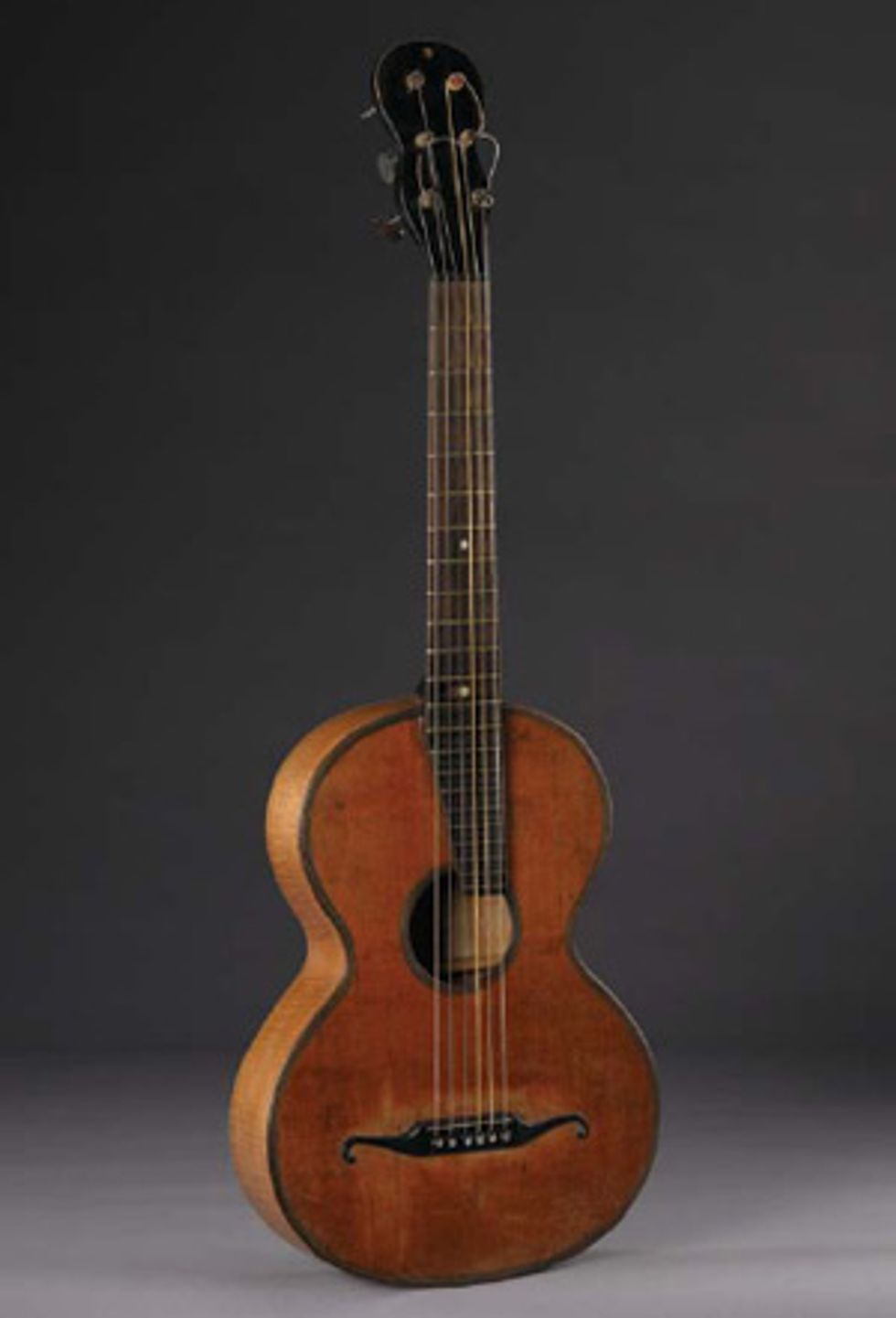 |
“I learned luthiery primitive from these guys,” Turner continues. “When I look back at the way we did things, I’m in shock. I mean, it was just horrendous. Those were the dark ages of American small-shop luthiery and guitar repair. Nobody knew anything outside of the factories— nobody knew Jack Diddley squat. A few classical builders were starting to do things, and I knew a few people just starting to try to build acoustic guitars. We who got into it in the early to mid ’60s were really on our own in terms of ‘How do you do this?’ and ‘How do you do that?’ Some of the repair techniques were utterly brutal. We didn’t know about steaming necks off for doing neck resets, we just slammed them out!”
Despite the fact that Autosalvage broke up, the band still played a role in Turner’s guitar- building future. “This guy who was a fan of our band brought me these pieces—an SG neck, a completely smashed SG body, and the pickup harness—and said, ‘Here, you want this? Seventy-five bucks,’” Turner recalls. “I said, ‘sure.’ So I had the neck and the wrecked body. I did this body shape that made it symmetrical and took the design to this cabinet shop on Broadway and Bleecker. They cut it out for me in mahogany, and I took it home and hacked away and veneered the back of it with walnut. Jerry Garcia wound up buying that guitar and used it on the Grateful Dead’s “Skull and Roses” album. That’s the guitar— and it has disappeared. Nobody knows where it is.”
Asked what inspired him to buy 75 bucks’ worth of broken guitar, Turner answers simply, “I wanted to build my own guitar, you know? By that time I had been doing guitar repair for four years or so, so I had the chops. In fact, in New York, when I was broke and needed to pick up a few bucks, I would go down to Dan Armstrong’s shop and say, ‘Dan, you got anything for me to do?’ And he would always toss me a fret job or have me glue a bridge on a Martin and pick up 10 or 15 bucks.”
Turner ended up moving to Marin County, just north of San Francisco, and more or less joined the Grateful Dead family. He did an inlay job on one of Phil Lesh’s basses and made a few custom pickups for the band. “In 1968 or ’69, where did you buy pickups? You could get DeArmonds and that was about it. You couldn’t buy Gibson pickups or Fender pickups. Dan Armstrong started making pickups under the tutelage of Bill Lawrence, and I thought, ‘Well, this is just a little cord with a little wire and some magnets—duh!’ And so I started literally handwinding my own pickups, counting the windings by hand. I brought them out to the Dead’s warehouse and showed Ron Wickersham, who had figured out how to measure the frequency response in the pickups. This was when nobody knew anything about what was really going on. The stuff that we take for granted now, we had to invent and figure out.”
The Alembic Years and Fleetwood Mac
Thus began Turner’s critical, tumultuous Alembic period. Turner co-founded Alembic with Wickersham, and the company’s initial aim was to push the envelope of live sound through the medium of Grateful Dead shows.
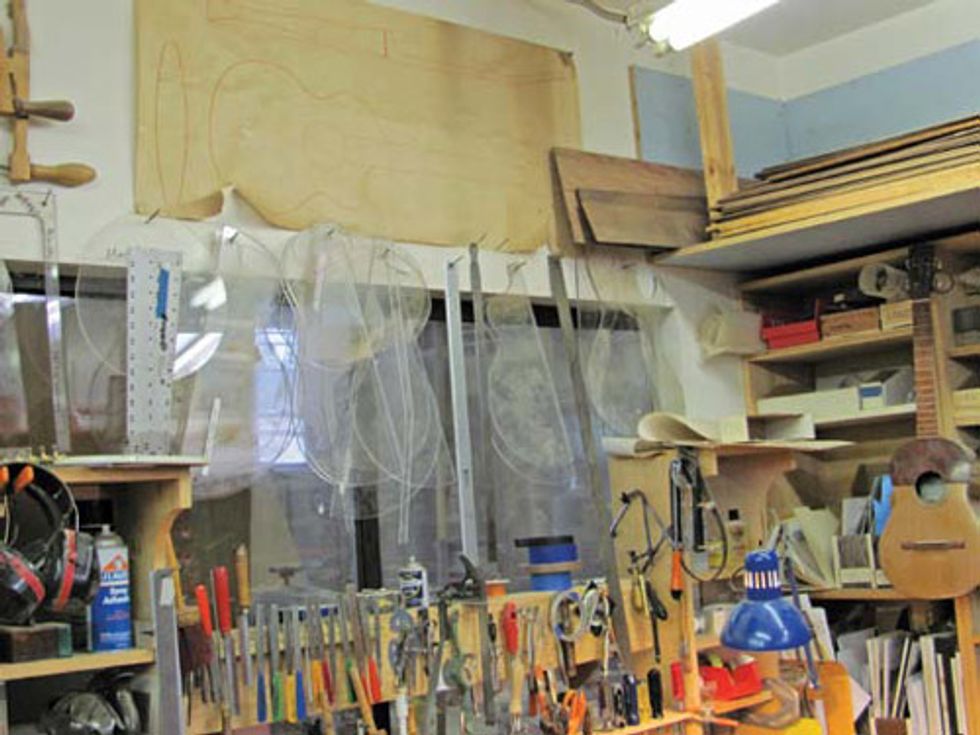
A corner of Turner’s factory with the original Model 1 blueprint on the wall.
Turner worked on practically everything Alembic touched, including designing speaker cabinets to eliminate standing waves in the Dead’s Wall of Sound PA system— which had McIntosh power amps pushing 125,000 watts through 450 drivers. Once Turner, Wickersham, and the other folks at Alembic had tackled the acoustic and electronic considerations of large PA systems, they focused on the instruments— primarily Lesh’s basses and Garcia’s guitars. Soon things started to snowball: A carving job Turner did for an early Alembic bass made for Jack Casady helped put Alembic on the map as an instrument maker, as did their work for Stanley Clarke.
Before Turner’s time with Alembic was up, he found himself involved with another milestone in the history of rock and roll—the studio sessions for Fleetwood Mac’s Rumours album, which the band was recording at the Record Plant just across the Golden Gate Bridge from San Francisco. Turner was sent over to do a setup on John McVie’s Alembic #33 bass, and he ended up staying for much of the sessions to work as a guitar tech because Lindsey Buckingham’s Strat had an Alembic Strat-o-Blaster preamp that kept blowing his Hiwatt amps.
“The preamp was turned up all the way—that’s 12 dB of gain coming out of the Strat-o-Blaster!” Turner relates. “Evidently, the Hiwatts were set up so that the gain structure expected a normal electric guitar output from the guitar. When you jacked it up by 12 dB, the amp tried to suck more current through the power transformer and it just fried. But it sounded great for about 15 or 20 minutes! [Laughs.] At about that same time, I did a Strat-o-Blaster in Lowell George’s Strat. So that whole Waiting for Columbus live album by Little Feat—that’s all Lowell with his Strat cranked way past 11.”
Turner left Alembic in 1978 with many lessons learned. “Alembic electric guitars were noted for being too clean and sterile sounding,” he notes. “And it was often attributed to the electronics. I came to the conclusion that it was not the electronics— it was the way the guitars were made. The very stiff neckthrough- body construction, with a primarily maple and purpleheart neck, didn’t allow enough warmth and body to come in.”
Given his involvement with the legendary acid-trip rock band of the flower power era (and of all time), as well as the freewheeling, “free love” reputation of the scene it dominated, one could easily assume Turner sort of stumbled onto the recipes that his highcaliber instruments and electronics are known for. Nothing could be further from the truth. He studied acoustics and the science of sound extensively, and even took Don Davis’s famed Synergetic Audio Concepts (aka “SynAudCon”) class. He also learned invaluable lessons from his association with Wickersham (whom he calls “a genius”), John Curl—who remains on the cutting age of audio design—and Dead live sound mixer Owsley “Bear” Stanley. In fact, the lessons garnered from this time with Alembic and the Rumours sessions with Buckingham were crucial to Turner’s development of the Model 1.
“Based on talks with Lindsey, and also the general criticism of Alembic guitars, I started thinking very deliberately,” says Turner. “I said, ‘Okay, what I’ve got to do is climb down off this branch of the tree and get down on the ground and look around for another tree to go up, in terms of guitar design.’ I went to a set-neck guitar with a mahogany body to try to get the best of both worlds. I wanted more of that clarity from the body, because I had played that hybrid SG and didn’t like its whippy neck. I also thought the SG was fabulous within about a one-octave range, so I wanted to extend that range. The choice of an arched top and back was very deliberate. I really thought about every aspect of the instrument. And then I showed Lindsey the blueprints and he said, ‘Oh, you know, I’d get one of these. I’d like the first one.’ And then Alembic blew up on me. Part of the settlement was that I left with the design.”
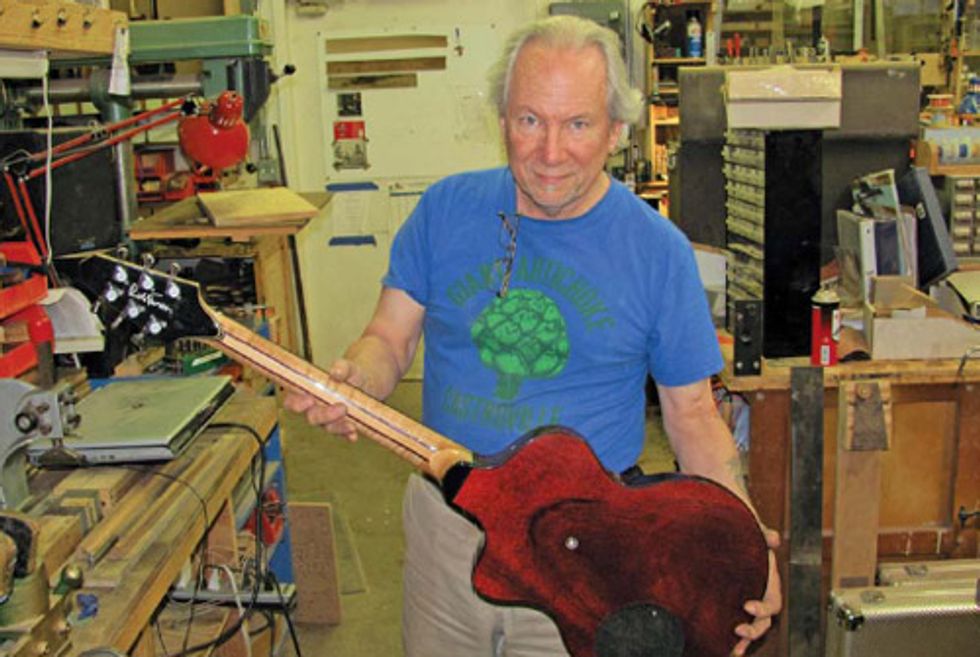
Few get to see the beauty of the Model 1’s backside
Acoustic Roots Electrified, Then Unplugged
The Model 1 blueprint, which sits high on a wall above a workbench in Turner’s factory, is torn on one side and looks deceptively simple. Asked if trial and error were part of the process when going from blueprint to the first Model 1 sent to Buckingham, Turner says, “I knew what I was going to make. I knew what it was going to sound like. I got the first one made and plugged it in, and it was exactly what I had thought it would be. And that was the guitar that really showed me that I could design from scratch and know what the results were going to be—sonically, as well as aesthetically. It was a turning point for me in gaining confidence as a designer.”
Although its forward-thinking features revolutionized the electricguitar universe, the Model 1 was inspired by designs from way back in the history of 6-string luthiery. “I had this Stauffer guitar from 1820s Vienna—[Johann Georg] Stauffer was the guy who taught C.F. Martin how to build guitars,” Turner explains. “The Model 1 is basically a Stauffer with a cutaway and slight modifications.”
With those roots, as well as the soundhole look of its unique, rotating pickup assembly, it’s not surprising that most people think the Model 1 is hollow. “But it isn’t,” Turner says. “It’s a solidbody. I wanted a mahogany body that would give it warmth like the original Les Paul Custom, the ‘Black Beauty’—which is all mahogany and doesn’t have the maple cap. I was looking for the warmth and sustaining quality of the mahogany and the clarity of the Strat.”
However, considering the Model 1’s rather petite outline, what is somewhat surprising is that the guitar is on the heavy side—but that seems to lend it a resonance and character beyond most traditional electrics. “That’s the combination of the mahogany and the maple and purpleheart neck,” says Turner, who also attributes those properties to the relatively wideband humbucker and its ability to remain remarkably clear. “Then you throw in the EQ, which lets you do some really trick things with amp voicings—you know, tickle the tubes with a nice midrange boost.”
These days, Turner manufactures Model 1 electronics in his shop and at D-TAR, the company he founded with Seymour Duncan. The first Model 1’s electronics— which were basically a single channel of parametric EQ without a bandwidth control—were made by Jim Furman. When Turner worked at Alembic, their guitars had similar features but never quite realized their tonal potential, whereas his Model 1 capitalized on an impeccable blend of excellent woodworking, playability, electronics, and, most importantly, tone.
“I kind of like a challenge, so part of the exercise with the Model 1 was seeing how far I could take a singlepickup instrument. It had a frequency sweep control, and then boost and cut, and then EQ in and EQ out, and Volume and Tone. So it had Volume and passive Tone and an EQ section.”
Naturally, the electronics have evolved over the years. Considering its creator, how could they not? Turner expanded the versatility of the rotating humbucker by adding a piezo pickup and updated electronics that allow you to split the magnetic pickup or bypass the onboard EQ. Turner is also developing a more affordable model without the piezo and EQ circuit.
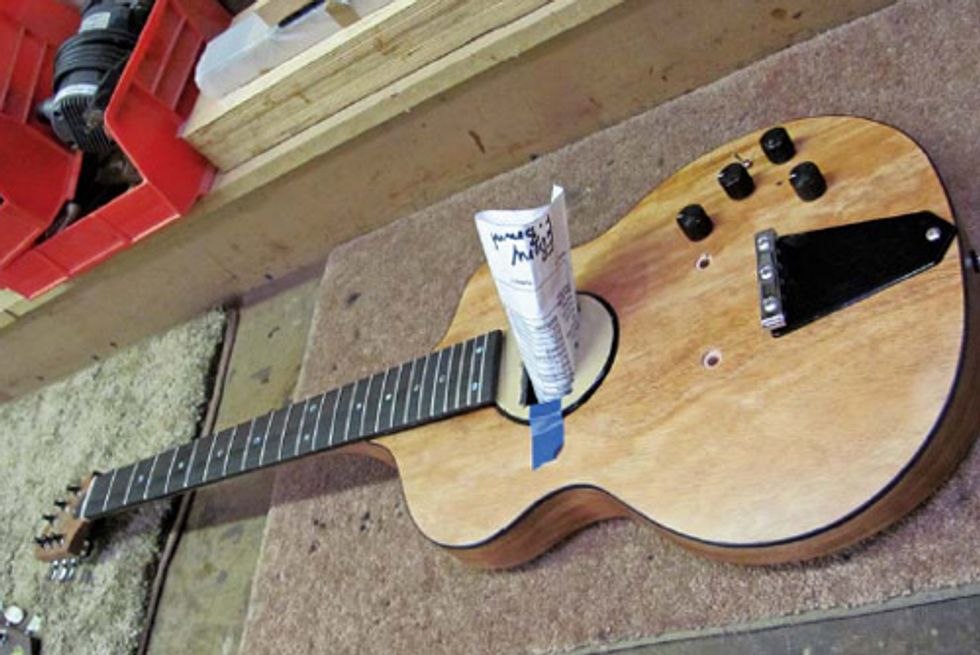
A Turner Model 1 waiting to be finished
Back to His Roots
After turning the electric-guitar universe inside out, Turner’s next logical move was back to his acoustic beginnings. And his purposes there stemmed from a similar dissatisfaction with amplified acoustic tone. Some audio engineers have a hard time listening to music on the radio because of the poor processing and mixing common to commercial music. Turner has similar issues with recordings of acoustic guitars. “Very often, amplified acoustics drive me crazy! God bless him, but I think Dave Matthews sounds like shit! That ultra-quacky piezo sound is not something I like.”
Turner’s issues with piezos in acoustic instruments is what pushed him to form an alliance with Duncan and develop the D-TAR Wavelength, which uses modeling technology, a piezo pickup, a condenser mic, and an 18-volt preamp. Duncan’s VP of engineering, Kevin Beller, helped Turner figure out what he didn’t like about piezos on acoustics.
“I was hearing piezo quack as being very fast clipping,” Turner says. “Well, we finally got to measure it, and Kevin started doing some ball-bearing drops—just dropping a ball bearing through a tube, down a foot, and onto a piezo pickup. And he was getting spikes of 100 volts out of the pickup. When you lay into the strings, you get that very first spike. Under a bridge—under a load—you’re not going to get 100 volts, but you’re going to get more than the nine volts that are available from the preamp. It clips. And a lot of the quack is the recovery of the preamp from that hit. By going to an 18-volt system, you clean things up tremendously.
“The other issue with undersaddle pickups is that, compared to an acoustic guitar, they are relatively phase-coherent,” Turner continues. “But the sound of an acoustic guitar is phase incoherent. It’s all screwed up, because it takes time for the frequencies to propagate out into a top and release into the acoustic field—and it takes different amounts of time for different frequencies. And then you’ve got the low sound coming out of the soundhole, which is also phase incorrect. So what we have come to love is the phase incoherency of acoustic instruments. With a piezo, you’re so close to the string that you’re actually intercepting the vibration before it gets to the guitar. One of the reasons that the piezo sound is so in-your-face is because the highs are coming at you too fast. So one reason we went to digital modeling was to selectively slow down different frequencies based on these complex algorithms. You can get all theoretical about it and say, ‘Oh, the theory about it is wrong,’ but all I care about is my ears. I like the theory to understand what my ears are hearing, but I don’t want to study the theory to tell my ears what to hear.”
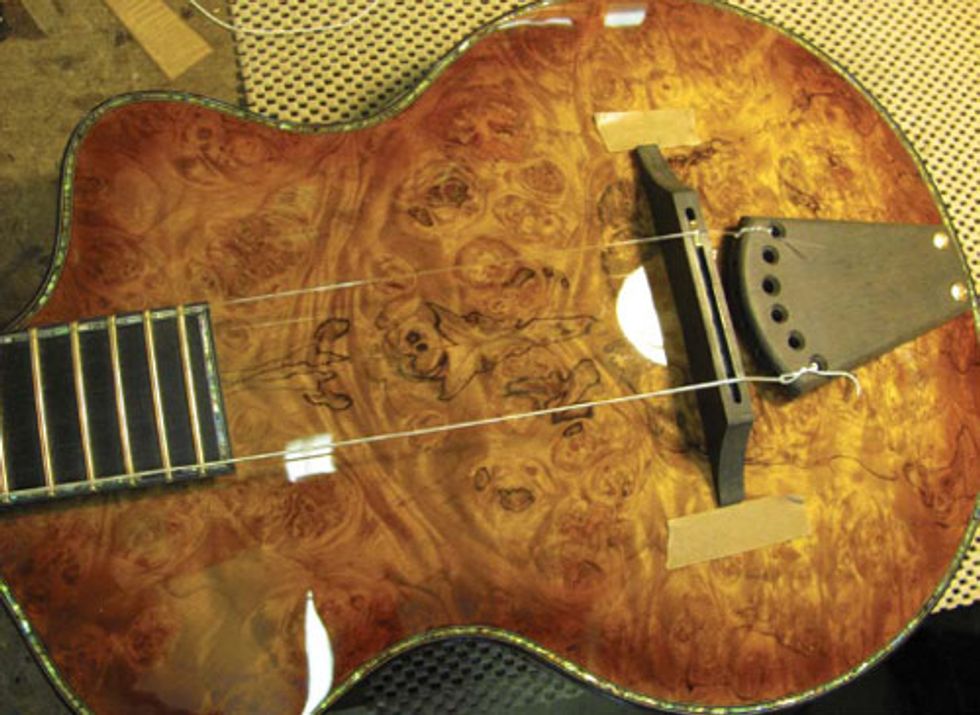
A Turner masterpiece in production for an undisclosed client. This instrument will have nylon strings and be equipped to work with Roland guitar synths.
Turner on the State of the Boutique Family
With five decades of guitar building under his belt, Turner naturally has opinions about the state and future of boutique guitar makers. He expects to see faster price increases from instruments made in Asia—especially China, where there’s a burgeoning middle class that will probably start competing for the worldwide demand. Of North American makers, Turner gives Jean Larrivée, Santa Cruz Guitars’ Richard Hoover, and Bob Taylor credit for being on the ground floor of boutique guitar construction. “I just hope that American guitar makers can hold on through the economy.”
Turner is encouraged by the fact that electric players seem to be looking beyond Les Pauls and Strats—though he is thinking about coming out with his own take on the Stratocaster. Given that his Model 1 is basically his take on the Les Paul, there is little doubt his interpretation of the Strat would be anything less than inventive, unique, and wholly playable. Only one thing gives him pause on the matter: “The dizzying array of Strats coming out of Fender these days is . . . I mean, who can keep track?”
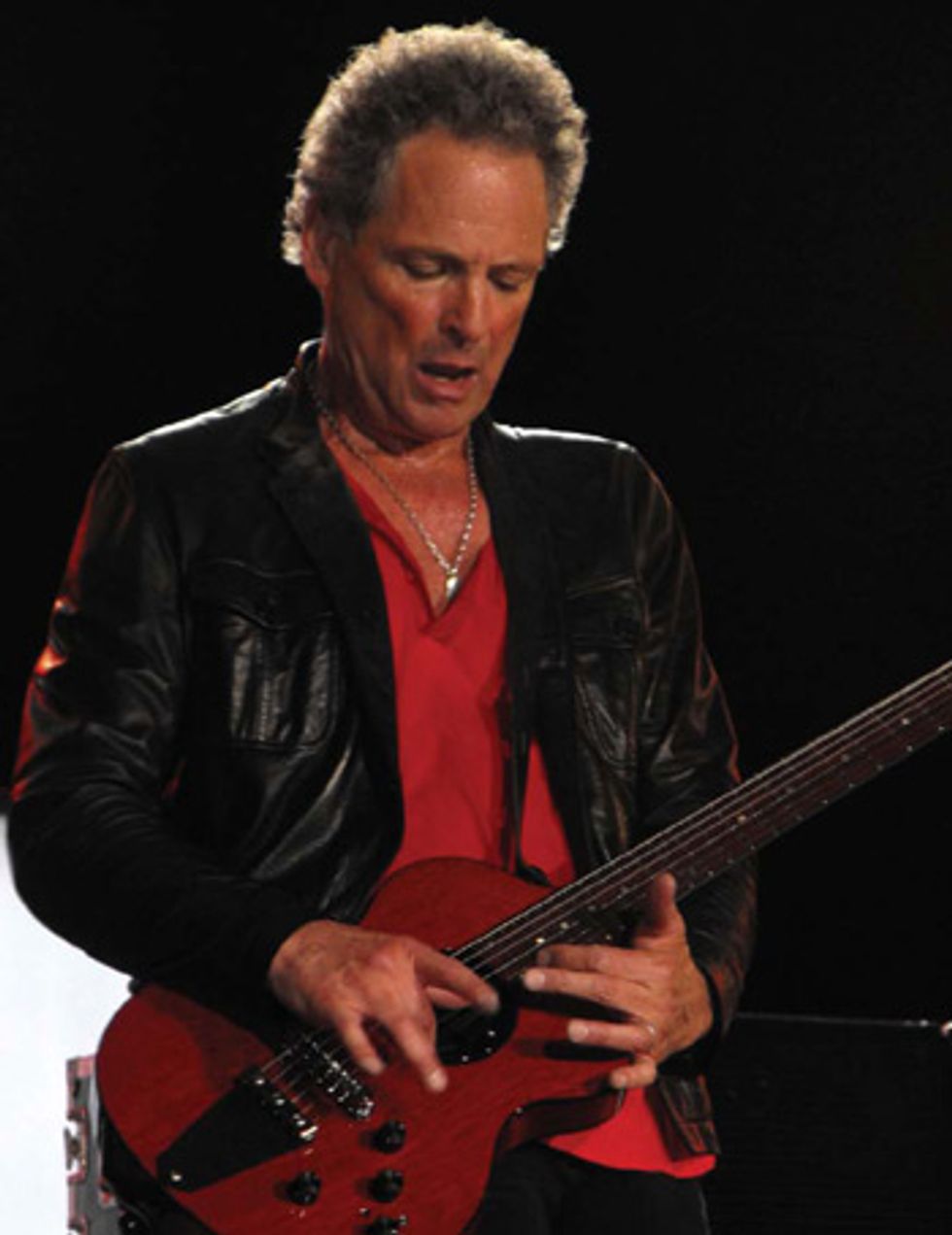 |
Rick Turner Model 1 Specs
The first Model 1 guitar built for Fleetwood Mac’s Lindsey Buckingham featured the following specifications.
Dimensions
- Scale length: 24 3/4"
- Nut width: 1 11/16"
- Fretboard radius: 12"
- String span at bridge: 2"
- Body: Mahogany
- Neck: Laminated maple and purpleheart set neck with 24 medium-jumbo frets
- Tuners: Schaller M6-A
- Bridge: Copy of Turner’s early-’70s Alembic design built by Stars Guitars
- Knobs: Mouser Electronics Eagle knurled black aluminum Electronics
- Pickup: Rotatable Rick Turner-designed, high-impedance humbucker with ceramic magnets, built by Bartolini
- Controls: Quasi-parametric EQ with hardwire-bypass switch, a 150 Hz–3.5 kHz sweep knob, 12 dB boost/cut knob, and Master Volume and passive Tone knobs




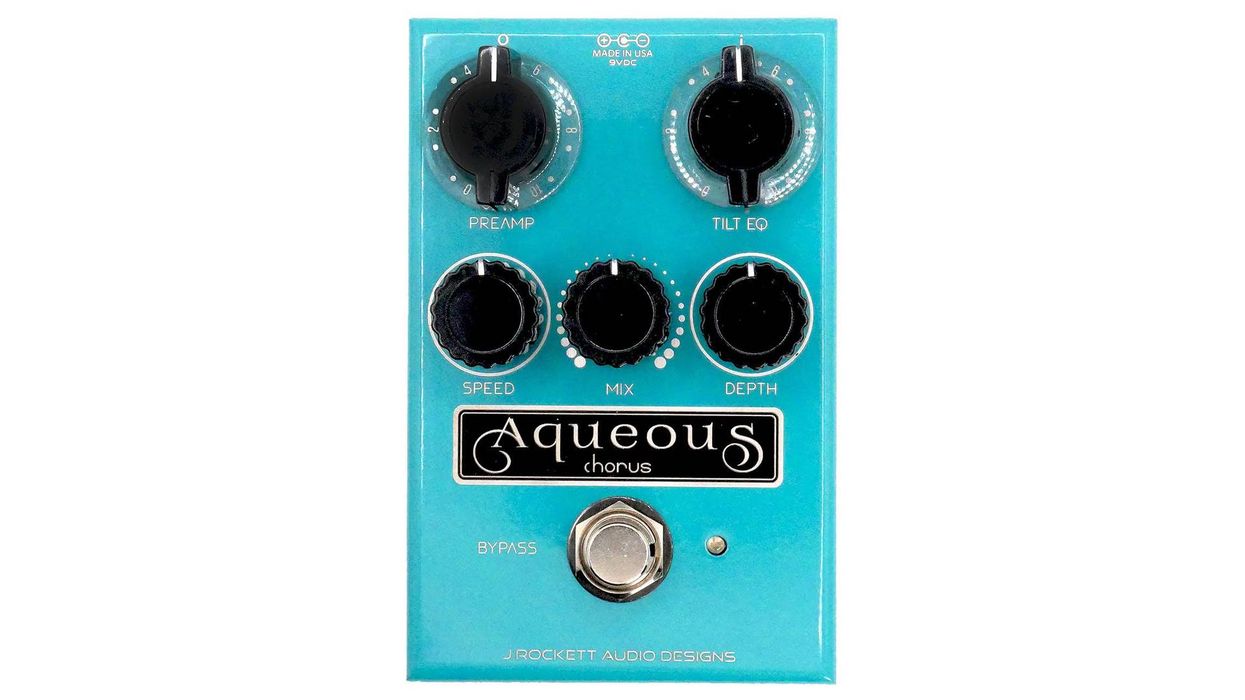



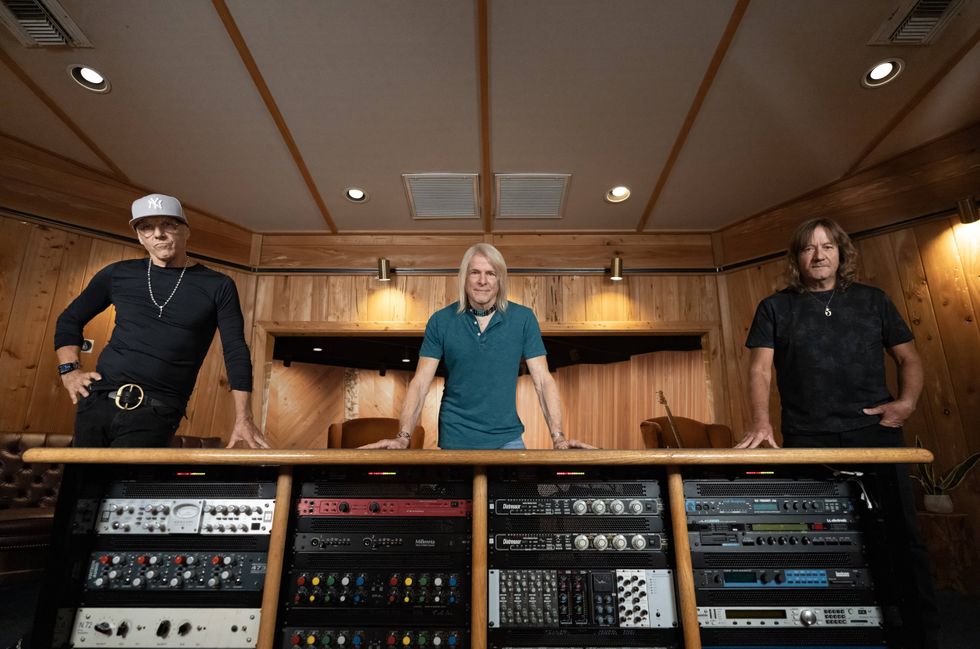
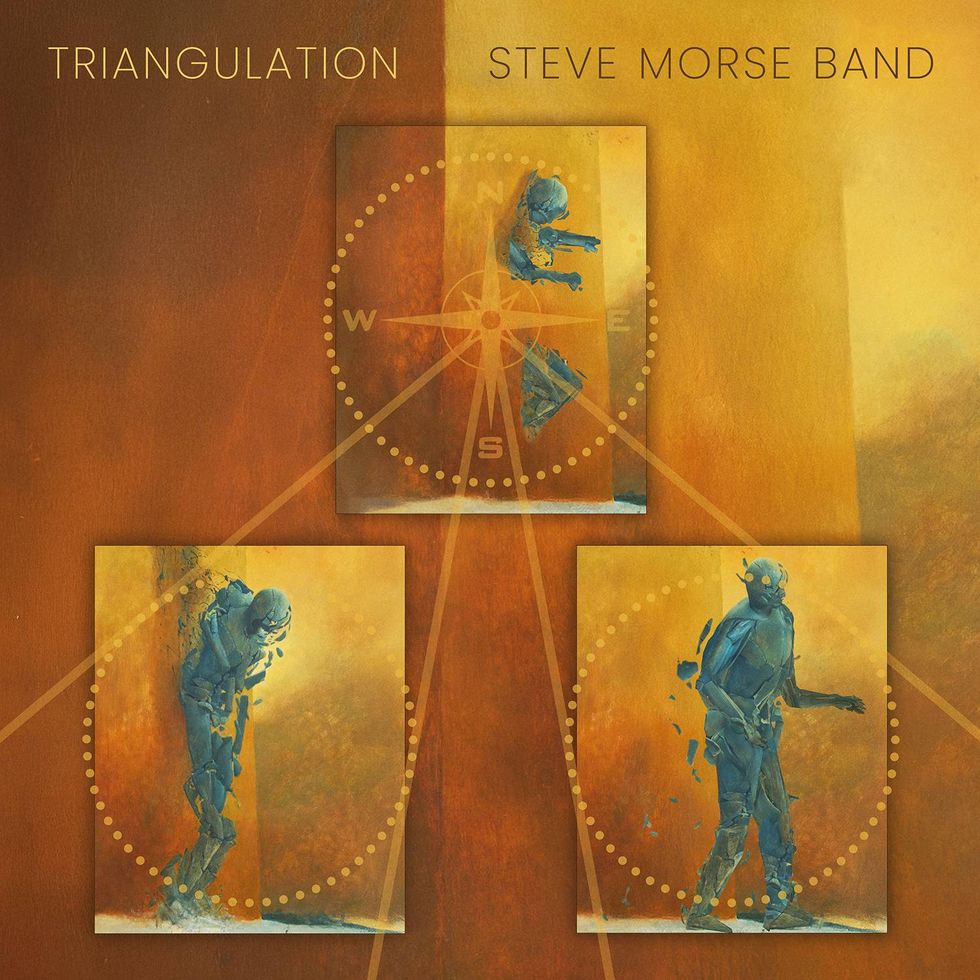
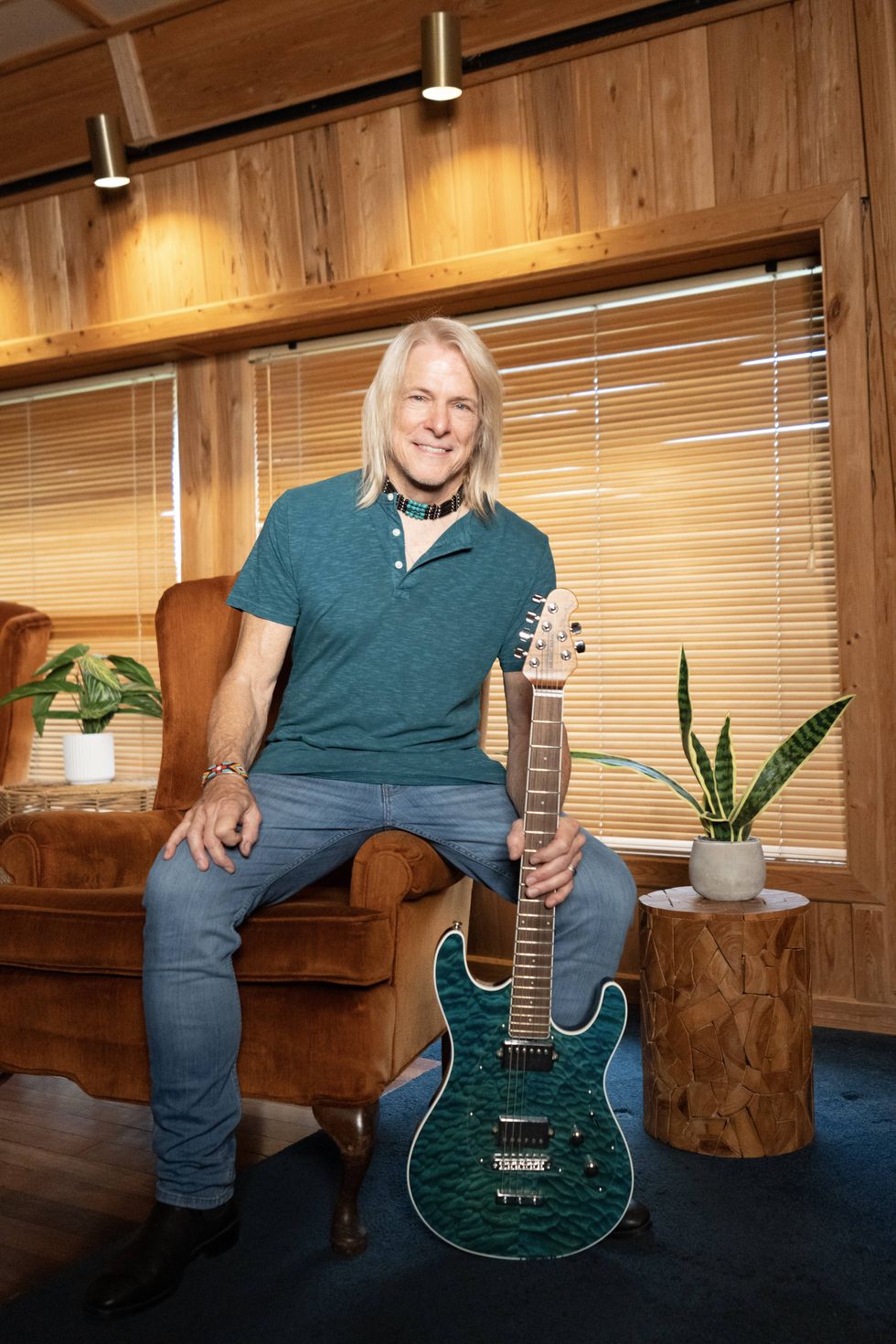





![Rig Rundown: Russian Circles’ Mike Sullivan [2025]](https://www.premierguitar.com/media-library/youtube.jpg?id=62303631&width=1245&height=700&quality=70&coordinates=0%2C0%2C0%2C0)



